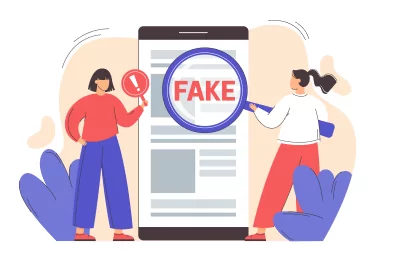As technology advances toward innovation, many firms seize the opportunity to thrive on the digital network. On the other side, even criminal entities enter the domain to use legitimate advances produced by corporations to bolster their destructive objectives. Indeed, these illegal companies leverage the internet to enhance their e-commerce reach to market their counterfeit or bogus goods. Fortunately, brand protection may assist in such a case.
Brand protection is the process of preventing counterfeiters, copycats, and other bad actors from illegally infringing your brand through the use of your intellectual property (IP), your brand name, and brand identity and by violating your trademarks, copyrights, patents, designs, and other types of IP.
Frequently Occurring Brand Infringements
From the physical product to the distinctive logo design, the brand embodies the firm’s essence. Unfortunately, others attempt to profit from another person’s effort by stealing (parts of) a brand and using it for their advantage. The following are a handful of the most prevalent instances.
1. Rogue Websites

Certain internet pirates will clone an entire brand’s website to fool people into believing it is a genuine article. They frequently use a domain name that is highly similar to the original, such as “amazone.com” instead of “amazon.com,” or they utilize a domain extension (such as.com,.nl, or.co.uk) that the legitimate firm does not own.
2. Infringement of Intellectual Property Rights

In this situation, the malevolent party will attempt to benefit from a business’s copyrighted assets. This might include appropriating a company’s designs or plagiarizing a blog article and republishing it under their name.
3. Counterfeiting

Counterfeiting is perhaps the most prevalent harmful conduct, and it is frequently the primary target of anti-piracy initiatives. Counterfeiting is the illegal manufacture and sale of identical or very similar items under the guise of the genuine manufacturer.
Brand Protection Strategy: Essential for Cybersecurity
Before considering the technologies that will be required, your answer must begin with a well-thought-out approach. However, what should that plan entail?
1. Legally Safeguard All Assets
The first step is to ensure that all corporate assets are legally protected. Once a counterfeiter is apprehended, this legal protection entitles the corporation to sue for any damages suffered.
While certain items are inherently covered by copyright law, others require registration to get complete legal protection. When developing a brand, it is critical to apply for the appropriate trademarks and patents (at the United States Patent and Trademark Office) and, if available, supplementary copyright protection.
2. Colleagues and Clients Alike Should Be Educated
When consumers and coworkers understand what makes a company special, they naturally become brand advocates and report lousy content.
By teaching students the distinguishing characteristics that set a brand different from others, they will be better equipped to distinguish a fake from a genuine article.
3. Conduct a Web Search for Any Infractions
It’s time to begin investigating suspicious internet activities! The most straightforward place to start is through search engines. Enter the brand name into Google or search marketplaces like eBay to check if counterfeit products appear.
A helpful tool is Google’s reverse image search, allowing users to input a picture and search the web for identical or similar photos.
4. Google Data Scraping to Detect Pirated Content
The next stage is to employ a more automated way to detect pirated content. While personally searching Google can already assist in identifying counterfeiters, this can be a lengthy process.
Rather than that, one may utilize a web scraping tool for anti-piracy reasons to automate the process in seconds. This program may scour search engines, markets, and even social networking sites for duplicate, pirated material.
Utilizing a scraper to obtain data from Google and comparable web sources automatically may save a business time and work.
5. Use Technology for Your Benefit
The reality is that having visibility into your operations is just too complicated to do correctly without this type of technology. Fortunately, there are innovative software tools available that will assist you in accomplishing your objectives.
If you are a large business with staff dedicated to trademark protection, you may need self-service products that you can use and distribute yourself.
Suppose your company does not have a dedicated Brand Protection department. In that case, you may want to seek a fully managed solution handled by an outsourced team that will assist you in defining your strategy and maximizing the value of your technology.
You may choose a mix of these two ways, depending on your needs and resources.
6. Consider Taking Actions
The final stage is to pursue the criminal pirates. As a result of the trademarks, patents, and copyright protection already in place, the corporation will be in a solid legal position to compel the nasty party to remove the stolen information. In many circumstances, even threatening legal action will be enough. If not, it’s time to see an attorney!
Brand protection has been an increasingly significant area for businesses to focus their efforts in recent years. More than ever, (online) brands are under attack, which means companies must safeguard their assets by implementing the necessary barriers and safeguards.
Due to the ease with which anybody can build a website or Google Shopping profile and begin selling online, the quantity of counterfeit items in circulation has increased significantly. Additionally, because the web is nearly unlimited in size, it may be challenging for a business to track down any counterfeits or other trademark infringements.
That is why trademark protection methods are necessary. Counterfeiters and other criminal brand infringements may be readily monitored and traced utilizing automated tools and processes. The brief below will go through the most critical anti-piracy techniques accessible to organizations today.
How can SOCRadar Help with Brand Protection?
Keyword monitoring is the initial component of brand protection software. Even counterfeit items rely on keywords to be displayed in the listing. SOCRadar’s Digital Risk Protection and Attack SurfaceManagement systems are designed to monitor high-risk websites and other material for comparable phrases to detect them.
Because counterfeiters are constantly updating or modifying their keyword usage, it becomes critical for companies to monitor false sales on online marketplace listings.
SOCRadar’s Extended Threat Intelligence solution continuously monitors the dark web and the surface web. You will receive an automated alert in the event of any questionable behavior, such as a phishing site or a phony social media account using your brand’s name.
Contact us to discover SOCRadar® Extended Threat Intelligence.